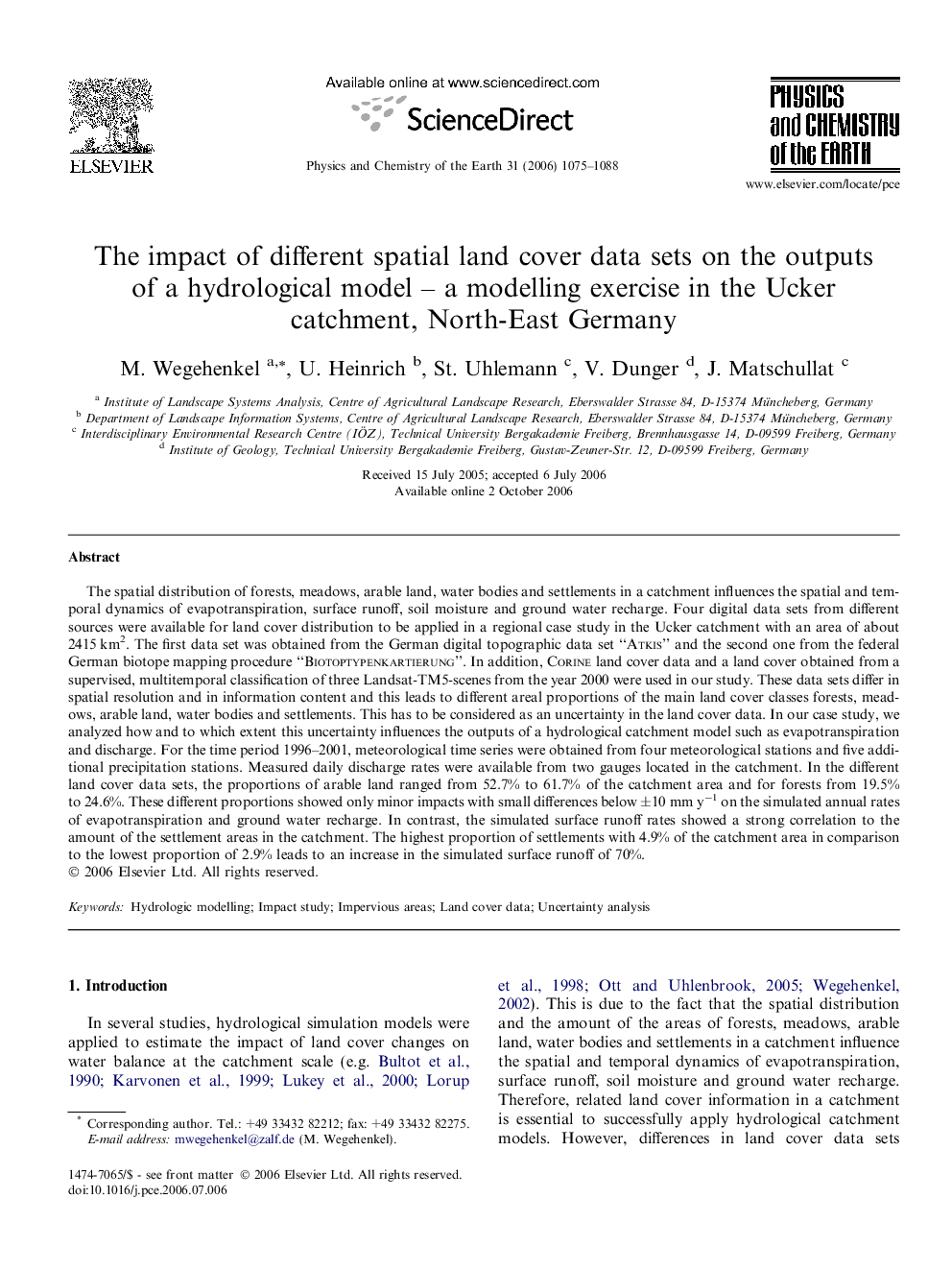| Article ID | Journal | Published Year | Pages | File Type |
|---|---|---|---|---|
| 4721986 | Physics and Chemistry of the Earth, Parts A/B/C | 2006 | 14 Pages |
The spatial distribution of forests, meadows, arable land, water bodies and settlements in a catchment influences the spatial and temporal dynamics of evapotranspiration, surface runoff, soil moisture and ground water recharge. Four digital data sets from different sources were available for land cover distribution to be applied in a regional case study in the Ucker catchment with an area of about 2415 km2. The first data set was obtained from the German digital topographic data set “Atkis” and the second one from the federal German biotope mapping procedure “Biotoptypenkartierung”. In addition, Corine land cover data and a land cover obtained from a supervised, multitemporal classification of three Landsat-TM5-scenes from the year 2000 were used in our study. These data sets differ in spatial resolution and in information content and this leads to different areal proportions of the main land cover classes forests, meadows, arable land, water bodies and settlements. This has to be considered as an uncertainty in the land cover data. In our case study, we analyzed how and to which extent this uncertainty influences the outputs of a hydrological catchment model such as evapotranspiration and discharge. For the time period 1996–2001, meteorological time series were obtained from four meteorological stations and five additional precipitation stations. Measured daily discharge rates were available from two gauges located in the catchment. In the different land cover data sets, the proportions of arable land ranged from 52.7% to 61.7% of the catchment area and for forests from 19.5% to 24.6%. These different proportions showed only minor impacts with small differences below ±10 mm y−1 on the simulated annual rates of evapotranspiration and ground water recharge. In contrast, the simulated surface runoff rates showed a strong correlation to the amount of the settlement areas in the catchment. The highest proportion of settlements with 4.9% of the catchment area in comparison to the lowest proportion of 2.9% leads to an increase in the simulated surface runoff of 70%.
